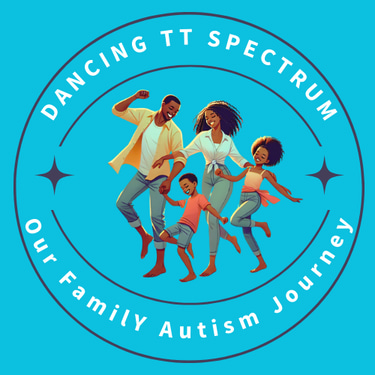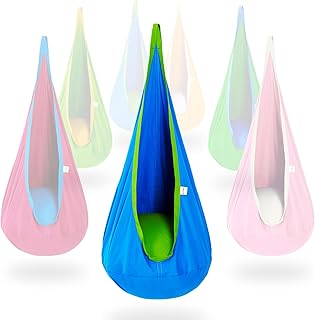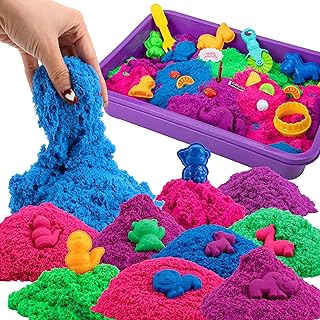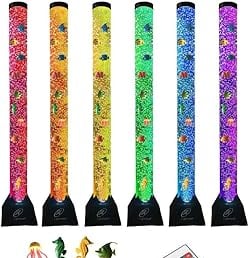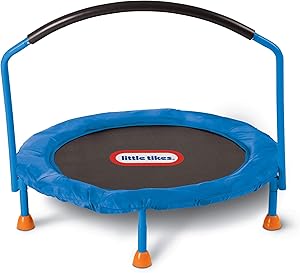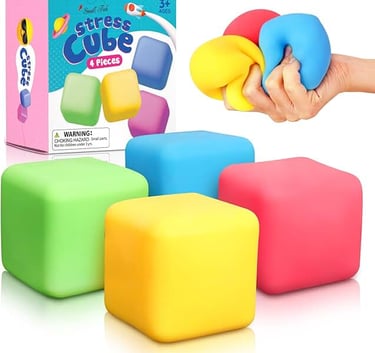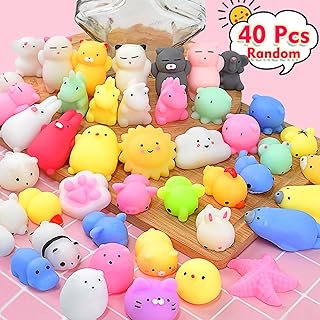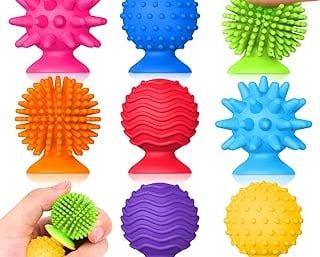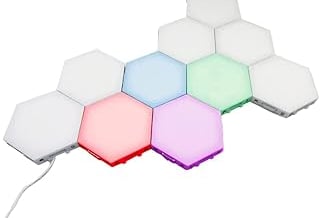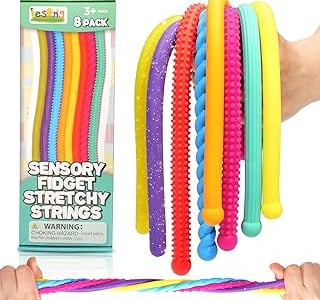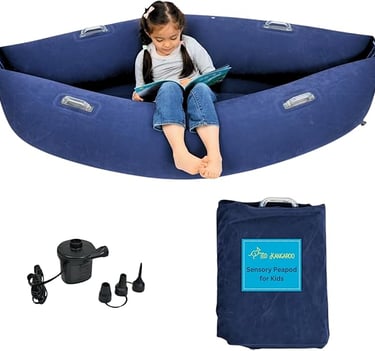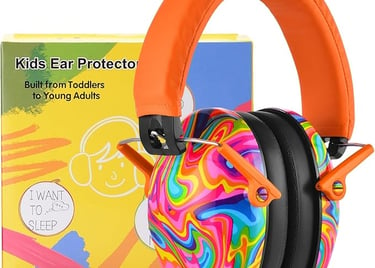Autism Support Journey
Explore sensory toys, tips, and resources to support growth and joy on the autism spectrum.
🧡 The 7 Emotional Stages of Grief After a Special Needs Diagnosis
Discover the 7 emotional stages many parents experience after a special needs diagnosis. From denial to advocacy, this heartfelt guide helps you feel seen, supported, and less alone.
When your child receives a special needs diagnosis, your world shifts in ways you never expected. It’s a moment full of love and fear, hope and heartbreak. Many parents go through what feels like grief — not because we don’t love our child, but because we have to release the expectations we once held.
Grief is real. It’s valid. And you’re not alone in it. These seven emotional stages are common and often repeat. This journey isn’t linear, but it’s deeply human.
1. Denial - "This can’t be right."
You may seek second opinions, question the professionals, or cling to every “typical” behavior you see. Denial is your brain’s way of softening the blow — a cushion between your heart and the hard truth.
2. Anger -"Why my child?"
You may feel angry at doctors, yourself, your partner, even the world. That’s okay. Anger is a valid part of grief. It comes from the love and protection you feel for your child and the dreams you held.
3. Bargaining - "If we find the right therapy, maybe this will go away."
This stage often involves intense research, trying every diet, supplement, or intervention in hopes of change. You want control. You want to “fix” what’s happening — not because your child is broken, but because you want to help.
4. Depression - "This is so hard. I feel so alone."
When the weight of the journey sets in, sadness and overwhelm may follow. You may grieve the future you once imagined. It’s okay to feel this. Your feelings are not a reflection of your love — they’re a sign of your depth.
5. Guilt -"Was this my fault?"
You may wonder what you did wrong, or if you missed the signs. Guilt is common — but misplaced. You didn’t cause this. You’re doing the best you can, and that is enough.
6. Acceptance -"This is our story, and it's beautiful in its own way."
You begin to see your child for exactly who they are — not in comparison to others. You release the need to change them and focus instead on supporting them.
7. Advocacy - "I will be their voice until they find their own."
This is where strength blooms. You start learning everything you can — about therapies, laws, rights, supports. You speak up, connect, and lead. You become a fierce advocate, because love moved you to action.
💛 Final Thoughts
You may experience these stages in a different order, or circle back to some repeatedly. That’s okay. There’s no right way to feel. Just remember you are growing, too. And every feeling you have is welcome here.
You are not alone. You're part of a community of parents walking this same winding road — hearts full of love, eyes wide open, and hands held out to support each other.
Sensory Friendly Toys
Sensory-friendly toys are crucial for children with autism as they cater to their unique sensory needs, providing comfort and stimulation in a safe manner. These toys can help regulate sensory input, promoting calmness and focus during overwhelming situations. For many children on the spectrum, traditional toys may be either too stimulating or not engaging enough; sensory-friendly options offer a balance that can enhance playtime and learning experiences. Additionally, these toys can aid in the development of fine motor skills and social interactions, allowing children to explore their environments without the stress of sensory overload. By incorporating sensory-friendly toys into their routines, caregivers can support children in navigating their world more effectively, fostering growth and emotional well-being. See my list of common sensory toys for our kiddos!
Sensory friendly bedroom?
How to Create a sensory friendly bedroom?
Creating a sensory-friendly bedroom from a nursery involves thoughtful design and easy accessibility. Start by placing a bed that is low to the ground, making it easy for your child to access. Incorporate sensory-friendly items like soft ceiling or wall lights that can be adjusted for brightness. Consider adding a glitter wall or a textured wall that invites tactile exploration. Create a quiet corner with cozy cushions or a soft beanbag for reading and relaxation. A small fish tank with colorful lights and gentle bubbles can provide soothing visual and auditory stimulation. You might also include sensory toys, a weighted blanket, or calming scents to enhance the experience. Overall, focus on creating a balanced atmosphere that caters to your child's sensory needs while making the space inviting and enjoyable.




Top 20 books to Read to your Nonverbal child
Books with Simple, Engaging Stories:
Interactive and Sensory Books:
Books with Repetition and Rhythm:
"Chicka Chicka Boom Boom" by Bill Martin Jr. and John Archambault
"Five Little Monkeys Jumping on the Bed" by Eileen Christelow
Picture-Focused Books:
Reading to your non-verbal child is crucial for enhancing their expressive and receptive language skills. Through stories, your child can absorb new vocabulary, understand narrative structures, and learn about emotions and social situations. Engaging with books also provides an opportunity for bonding, as you can use tone and facial expressions to convey meaning, even without words. This interaction encourages your child to express themselves in their own way, promoting communication skills. Additionally, regular reading can stimulate their imagination and curiosity, serving as a foundation for future learning. Ultimately, creating a consistent reading routine fosters an environment rich in language, which is essential for your child's overall development. See my top 20 books that are crucial to read with your non verbal or preverbal child.
Top 5 Vitamins for your Autistic Child
Omega-3 Fatty Acids
Found in fish oil, omega-3s may support brain development, reduce inflammation, and improve focus and communication.
Common Form: DHA + EPA supplements.
Food Sources: Salmon, mackerel, chia seeds, and walnuts.
Vitamin D
Supports immune function and brain health. Many children, including those on the spectrum, may be deficient in vitamin D.
Common Form: Vitamin D3 drops or tablets.
Food Sources: Fortified milk, fatty fish, and sunlight exposure.
Probiotics
Promotes gut health, which is linked to improved mood and behavior in some children with autism.
Common Form: Capsules, powders, or chewable tablets.
Food Sources: Yogurt, kefir, and fermented foods.
Magnesium
May help with sleep, anxiety, and calming overstimulated sensory systems.
Common Form: Magnesium glycinate or magnesium citrate.
Food Sources: Leafy greens, nuts, and seeds.
Vitamin B6 with Magnesium
This combination is believed to support neurotransmitter function and behavior regulation.
Common Form: Combined supplements in chewable or powder form.
Food Sources: Bananas, chicken, and fortified cereals.
Please note there is no one-size-fits-all approach to supplements for children on the autism spectrum, some vitamins and supplements are commonly recommended by healthcare professionals based on research and anecdotal evidence. It's crucial to consult with a healthcare provider before starting any new supplements. Here are five commonly discussed supplements:
Disclaimer: I am not a doctor or medical professional. The information shared here is based on my personal experiences and what has worked for my family. Always consult your healthcare provider or pediatrician before introducing any supplements or making changes to your child's healthcare routine.
Top 5 learning Apps for your Autistic Child
Autispark
Specifically designed for children with autism, AutiSpark offers tailored activities to improve cognitive, social, and communication skills.
Features sensory-friendly games and puzzles that enhance focus and attention without overwhelming the child.
Helps develop fundamental skills like recognizing emotions, identifying objects, and problem-solving in a structured environment.
Encourages learning at the child’s own pace with no time pressure.
ToddlerLearning
Provides fun, colorful, and interactive games that teach basic concepts such as shapes, colors, numbers, and alphabets.
The simplicity and repetition of activities are ideal for younger children on the spectrum, who thrive on predictable patterns.
Encourages fine motor skills and hand-eye coordination through touch-based interaction.
Promotes early literacy and cognitive skills while keeping the child engaged.
Otismo
An inclusive educational app focused on special needs, with features tailored for children with autism.
Offers AAC (Augmentative and Alternative Communication) tools for non-verbal or minimally verbal children.
Includes interactive games designed to improve motor skills, emotional recognition, and language development.
Tracks progress and adapts activities to the child’s developmental level, ensuring continual growth.
Hooked on Phonics
A proven method for teaching reading, Hooked on Phonics is highly structured, making it suitable for children on the spectrum who benefit from step-by-step learning.
Combines visual, auditory, and kinesthetic elements to cater to different learning styles.
Encourages early literacy by teaching phonics and word recognition in a fun, interactive way.
Promotes a sense of accomplishment through gradual challenges and rewards, boosting confidence in reading skills.
Homer
A comprehensive early learning app that focuses on reading, math, and emotional development.
Allows parents to personalize learning plans based on their child’s interests and developmental needs.
Combines storytelling with interactive learning, which helps children on the spectrum engage more deeply with the content.
Encourages speech and language development with prompts that guide the child to vocalize and interact.
Allowing your autistic child to learn with educational apps can be incredibly beneficial, as these tools cater to diverse learning styles and provide a personalized approach to education. Many apps offer engaging, interactive features that capture your child’s attention while promoting skill-building in areas like communication, problem-solving, and emotional regulation. Learning apps also enable repetition and predictability, which can be comforting and essential for skill mastery in autistic children. By integrating technology into their learning journey, you empower your child to build independence, confidence, and foundational skills at their own pace, fostering a positive and inclusive educational experience.
Sensory Seeker vs. Sensory Avoider
Sensory Seeker
Spinning in Circles – They may spin around frequently, either standing or sitting, to get vestibular (balance) input.
Jumping Constantly – They might seek deep pressure by jumping on furniture, trampolines, or even the floor repeatedly.
Touching Everything – They may touch objects, people, or textures excessively, craving tactile stimulation.
Chewing on Non-Food Items – They often chew on clothing, pencils, fingers, or toys to get oral sensory input.
Loud Noises or Vocalizations – They may hum, make loud noises, or scream unexpectedly to satisfy auditory stimulation needs.
Seeking Tight Hugs or Pressure – They might enjoy deep pressure stimulation, like weighted blankets or tight squeezes.
Flapping Hands or Clapping – They may flap hands rapidly, clap, or wave arms to self-regulate and express excitement.
Licking or Sniffing Objects – They may smell objects, foods, or people, or even lick things to explore through their senses.
Crashing into People or Objects – They may intentionally bump into walls, people, or furniture to get proprioceptive (body awareness) input.
Loving Bright Lights or Fast-Moving Images – They may stare at flashing lights, spin toys, or watch repetitive moving visuals for visual stimulation
Sensory Avoider
Covers Ears to Block Noise – They may cover their ears with hands or wear noise-canceling headphones to avoid loud or sudden sounds.
Avoids Crowded or Busy Places – They might feel overwhelmed in shopping malls, parties, or playgrounds due to too many people and stimuli.
Dislikes Certain Textures of Clothing – They may refuse to wear scratchy fabrics, tags, or tight-fitting clothes and prefer soft, loose clothing.
Rejects Certain Food Textures or Smells – They may avoid foods that are mushy, crunchy, sticky, or have strong smells.
Avoids Bright or Flashing Lights – They may become distressed by fluorescent lighting, bright screens, or flashing toys.
Prefers to Be Alone or in Quiet Spaces – They often retreat to dimly lit, quiet areas when overstimulated.
Resists Physical Touch – They may dislike hugs, handshakes, or light touches, even from family members.
Startles Easily from Unexpected Sensory Input – Sudden noises, touches, or movements can trigger distress or meltdowns.
Has a Strong Reaction to Certain Smells – They may gag or become nauseated by perfumes, cleaning supplies, or food odors.
Walks on Tiptoes to Avoid Floor Sensations – They may avoid walking barefoot on certain surfaces like grass, sand, or carpet.
A sensory-seeking child craves more sensory input because their nervous system doesn’t process sensory stimuli strongly enough. They actively seek sensory experiences to help regulate their body and emotions. A sensory-avoiding child is overwhelmed by sensory input because their nervous system processes stimuli too intensely. Many autistic individuals experience both sensory-seeking and sensory-avoiding behaviors depending on the situation.
💙 Grief After a Diagnosis: Why Parents Feel It and How to Cope
When you first hear the words “your child has autism” (or another special needs diagnosis), your world can feel like it’s been turned upside down. Alongside love and determination often comes an unexpected companion: grief.
Many parents are surprised by this. “Why am I grieving? My child is still here.” But grief isn’t just about death — it’s about the loss of expectations, dreams, and the future you imagined.
🌿 Why Parents Grieve After a Diagnosis
Every parent carries a vision of what their child’s future will look like. When a diagnosis enters the picture, that vision shifts. Instead of following the path you thought you were on, you may find yourself navigating therapies, new challenges, or simply a different rhythm than you expected. Grief is your heart’s way of catching up with this new reality. It doesn’t mean you love your child any less. In fact, it means your love is so deep that the change feels overwhelming.
🌈 The 5 Stages of Grief for Parents After a Diagnosis
Just like grief after a loss, parents may cycle through familiar stages when processing a special needs diagnosis.
Denial – “This can’t be happening.”
Shock and disbelief are normal early reactions.
Many parents hope the diagnosis is temporary or a mistake.
Anger – “Why us? Why my child?”
Anger may be directed at yourself, your partner, professionals, or the world.
This stage often hides a deeper pain: fear for your child’s future.
Bargaining – “If I do everything right, maybe this will go away.”
Parents may search endlessly for “fixes” or treatments.
This stage can leave you exhausted and overwhelmed.
Depression – “This is too much.”
Feelings of sadness, heaviness, or hopelessness may surface.
Some parents withdraw, isolate, or feel stuck in the weight of the reality.
Acceptance – “This is our journey, and my child is amazing as they are.”
Acceptance doesn’t mean the hard days vanish.
It means you begin to find peace in loving your child exactly as they are.
👉 These stages aren’t linear. You may move back and forth between them many times — and that’s okay.
💌 You Are Not Alone
If you’re grieving after your child’s diagnosis, please remember: you are not alone.
Every parent’s journey is different, but many of us share this emotional process.
It’s okay to:
Cry and feel angry.
Take time to adjust.
Ask for help from friends, family, or parent communities.
Celebrate your child’s strengths even while grieving.
Grief and love can coexist.
🌟 Moving Forward With Hope
Grief after a diagnosis doesn’t mean you’re weak — it means you’re human. Over time, many parents discover joy and beauty in the unexpected journey. Your child’s story is still unfolding, full of love, resilience, and possibility.
💙 You’re not grieving because you don’t love your child. You’re grieving because you love them so much.
✨ Final Encouragement
On Dancing Through the Spectrum, I’ll be sharing more about the 5 stages of grief after a diagnosis — with real stories, gentle encouragement, and practical tips.
👉 Follow along for the full series:
Stage 1: Denial
Stage 2: Anger
Stage 3: Bargaining
Stage 4: Depression
Stage 5: Acceptance
Dancing Through the Spectrum has been a wonderful resource for my family and our autism journey!
Emily Smith


★★★★★
